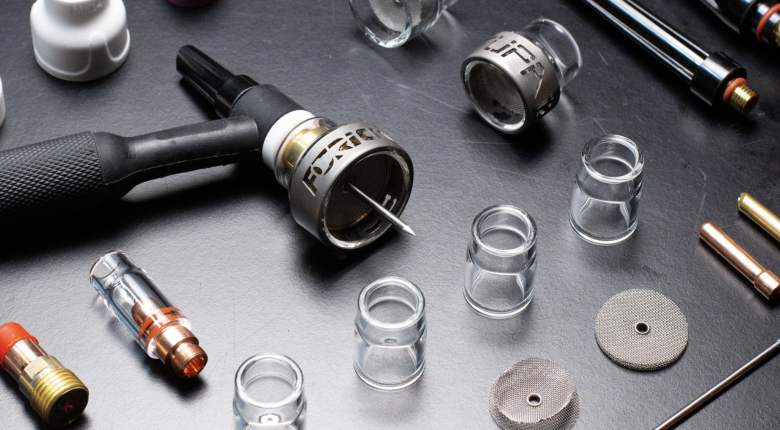What is different about a gas lens compared to a gas cup or nozzle? Is there simply one option that is always better than the other?
The secret to TIG welding success lies in its ability to shield the arc from contaminants in the atmosphere using the argon shielding gas we covered in the last module. The high-pressure argon is connected to a regulator which controls the gas flow rate and supplies it to our welder where we can switch this flow on or off via our torch or foot pedal through an internal solenoid inside the machine.
We don't have a lot of variables in the supply of shielding gas and while our regulator will allow us to adjust the flow rate, our machine settings can also delay our arc start after the gas solenoid has switched which is known as pre-flow. You can also set the shielding gas to keep flowing after the arc is stopped which is called post flow.
That is only part of the control we have though as we can also use different nozzles or cups and lenses of varying sizes which help us ensure we have good coverage of argon gas over our weld no matter how big or small the job, how tight the gap, or what the material we are welding is.
In this lesson, we cover some points on those topics along with cup and lens sizing, the advantages and disadvantages of using a gas lens including tungsten stick out and manoeuvrability options along with showing you the actual difference in coverage between a gas cup and a gas lens.
Three important things to take away from this lesson are:
1.) Gas nozzles are numbered according to size from a number 3 for micro torches to a massive 24 for extreme coverage.
2.) Nozzles provide a relatively direct flow of gas which is great for welding aluminium, but more reactive metals require better coverage which is where a gas lens really comes in handy.
3.) Gas lens sizes follow a similar numbered convention and diffuse the argon, allowing it to spread out further and better shield the work area giving you the chance to produce high-quality and structurally sound welds.
This is just ONE module from the full Practical TIG Welding course.
------------------------------------
TIME STAMPS:
0:00 - Argon Pre-Flow & Post-Flow
1:01 - What Are Gas Cups/Nozzles
1:25 - Gas Cup Sizing
2:16 - Different Styles Depend On Your Torch
2:30 - A Gas Lens & Sizing
3:01 - Gas Cup Coverage Example
3:26 - Gas Lens Coverage Example
3:50 - Efficiency/Gas Savings
4:17 - Large Cup Sizing
5:05 - Careful With Your Gas Flow Settings
5:36 - Flow Rate Rule Of Thumb
6:09 - Large Cup Downsides
6:58 - Tungsten Stick-Out
7:26 - Working In The Wind
8:00 - Gas Lens And AC/DC Welding
8:38 - Key Points
9:24 - Just One Of Over 50 Modules
------------------------------------






Comments
No one has commented on this page yet.